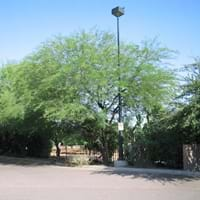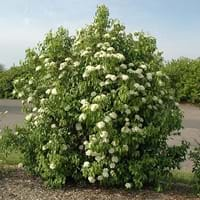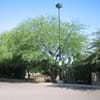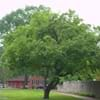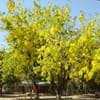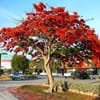Life Span
Perennial
Perennial
Origin
Northeast Mexico, Southeastern United States
Northeastern United States, Mid-Atlantic United States, Southeastern United States, North-Central United States, Central United States, Canada
Types
Not Available
Arrowwood Viburnum, American Cranberrybush, European Cranberrybush
Habitat
Hillside, Slopes
Rocky areas, Stream side, Woodlands
USDA Hardiness Zone
9-11
2-8
AHS Heat Zone
Not Available
8-1
Sunset Zone
Not available
1a, 1b, 2a, 2b, 3a, 3b, 4, 5, 6, 7, 8, 9, 14, 15, 16, 17, 18, 19, 20, 21
Habit
Arching/Fountain-shaped
Oval or Rounded
Flower Color Modifier
Bicolor
Bicolor
Fruit Color
Brown
Green, Light Yellow, Pink, Blue Violet, Black
Leaf Color in Spring
Dark Green
Green
Leaf Color in Summer
Light Green
Green
Leaf Color in Fall
Dark Green
Red, Purple
Leaf Color in Winter
Light Green
Not Available
Leaf Shape
Elliptic
Ovate
Plant Season
Spring
Spring, Summer, Fall
Sunlight
Full Sun
Partial Sun, Partial shade
Growth Rate
Medium
Not Available
Type of Soil
Dry, Loam, Sandy
Clay, Loam, Sand
The pH of Soil
Slightly Alkaline
Acidic, Neutral, Alkaline
Soil Drainage
Dry
Average
Bloom Time
Early Spring, Late Spring, Mid Spring
Spring, Late Spring
Tolerances
Drought
Drought
Where to Plant?
Ground
Ground
How to Plant?
Seedlings
Seedlings
Plant Maintenance
Low
Medium
Watering Requirements
Do not water excessively
Do not water frequently
In Summer
Adequately
Ample Water
In Spring
Average Water
Average Water
In Winter
Average Water
Moderate
Soil pH
Slightly Alkaline
Acidic, Neutral, Alkaline
Soil Type
Dry, Loamy, Sandy
Clay, Loam, Sand
Soil Drainage Capacity
Dry
Average
Sun Exposure
Full Sun
Partial Sun, Partial shade
Pruning
No pruning needed
Cut limbs, Remove damaged leaves, Remove dead branches
Fertilizers
Not Available
as it is a flowering plant, use high phosphorous content fertilizer
Pests and Diseases
Healthy tree
Downy mildew, fungus, Powdery mildew, Red blotch, Rust
Plant Tolerance
Drought
Drought
Flower Petal Number
Single
Not Available
Foliage Texture
Fine
Medium
Foliage Sheen
Matte
Matte
Attracts
Birds, Flies
Birds, Butterflies
Allergy
Not Available
no allergic reactions
Aesthetic Uses
Not Used For Aesthetic Purpose
Showy Purposes
Beauty Benefits
Not Available
Not Available
Environmental Uses
Erosion control
Food for birds, Wildlife, Windbreak
Medicinal Uses
Fever, Kidney problems, Not Available, Urinary tract problems
Asthma, Cramps, Diuretic, Fever, Nerve sedative, Palpitation
Part of Plant Used
Flowers
Flowers, Fruits
Other Uses
Food for animals, Food for insects
Used As Food, Used for its medicinal properties
Used As Indoor Plant
No
No
Used As Outdoor Plant
Yes
Yes
Garden Design
Rock Garden / Wall
Feature Plant, Foundation, Fruit / Fruit Tree, Hedges, Screening / Wind Break
Botanical Name
Senegalia berlandieri
VIBURNUM lentago
Common Name
Acacia
Nannyberry
In Hindi
Acacia
Nannyberry
In German
Acacia
Nannyberry
In Spanish
Acacia
Nannyberry
In Greek
Acacia
Nannyberry
In Portuguese
Acacia
Nannyberry
In Polish
Acacia
Nannyberry
In Latin
Acacia
Nannyberry
Phylum
Magnoliophyta
Magnoliophyta
Class
Magnoliopsida
Magnoliopsida
Family
Fabaceae
Caprifoliaceae
Clade
Not Available
Angiosperms, Asterids, Eudicots
Tribe
Acacieae
Not Available
Subfamily
Mimosoideae
Not Available
Number of Species
Not Available
Not Available
Difference Between Acacia and Nannyberry
If you are confused whether Acacia or Nannyberry are same, here are some features about those plants to help you choose better. Many people think that these two plants have the same characteristics, but one can see Acacia and Nannyberry Information and learn more about it. Fertilizers required for proper growth of Acacia are Not Available, whereas for Nannyberry fertilizers required are as it is a flowering plant, use high phosphorous content fertilizer. Hence, one should know the basic difference between Acacia and Nannyberry if you are planning to have them in your garden to enhance its beauty.
<
Flowering PlantsImportance of Acacia and Nannyberry
Want to have the most appropriate plant for your garden? You might want to know the importance of Acacia and Nannyberry. Basically, these two plants vary in many aspects. Compare Acacia and Nannyberry as they differ in many characteristics such as their life, care, benefits, facts, etc. Every gardener must at least have the slightest clue about the plants he wants to plant in his garden. Compare their benefits, which differ in many ways like facts and uses. The medicinal use of Acacia is Fever, Kidney problems, Not Available and Urinary tract problems whereas of Nannyberry is Asthma, Cramps, Diuretic, Fever, Nerve sedative and Palpitation. Acacia has beauty benefits as follows: Not Available while Nannyberry has beauty benefits as follows: Not Available.
Compare Facts of Acacia vs Nannyberry
How to choose the best garden plant for your garden depending upon its facts? Here garden plant comparison will help you to solve this query. Compare the facts of Acacia vs Nannyberry and know which one to choose. As garden plants have benefits and other uses, allergy is also a major drawback of plants for some people. Allergic reactions of Acacia are Not Available whereas of Nannyberry have no allergic reactions respectively. Having a fruit bearing plant in your garden can be a plus point of your garden. Acacia has no showy fruits and Nannyberry has showy fruits. Also Acacia is flowering and Nannyberry is not flowering . You can compare Acacia and Nannyberry facts and facts of other plants too.
